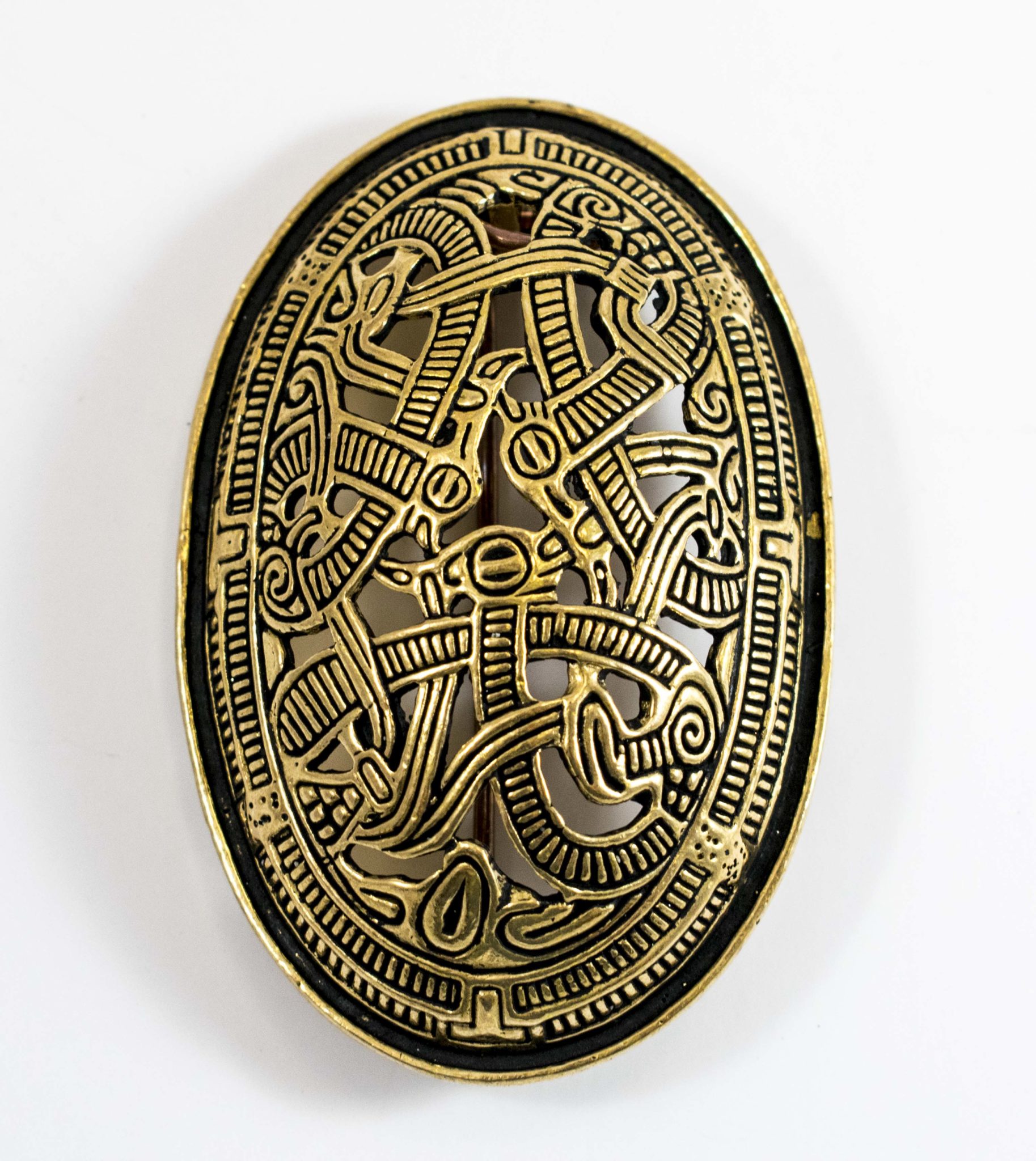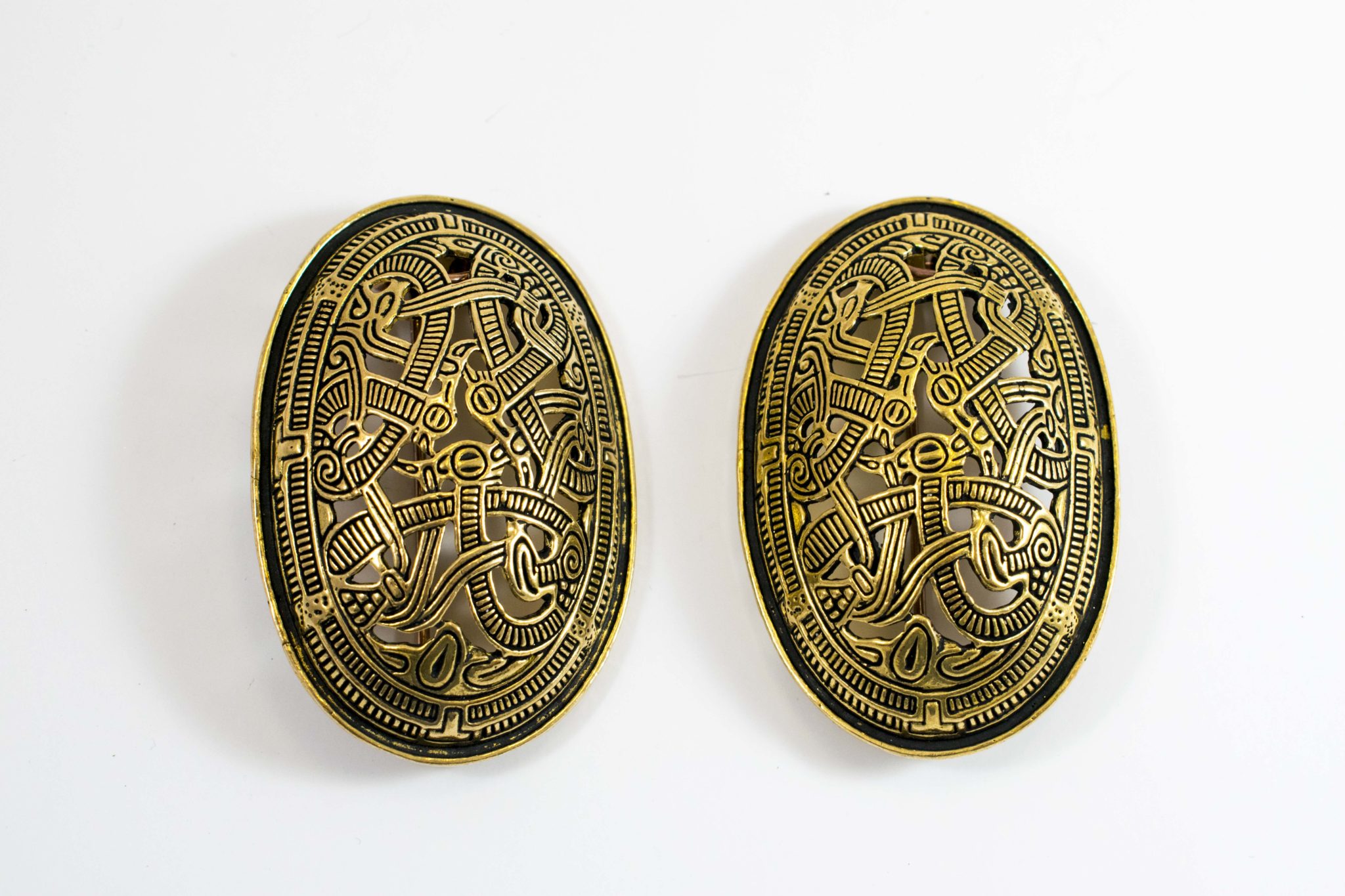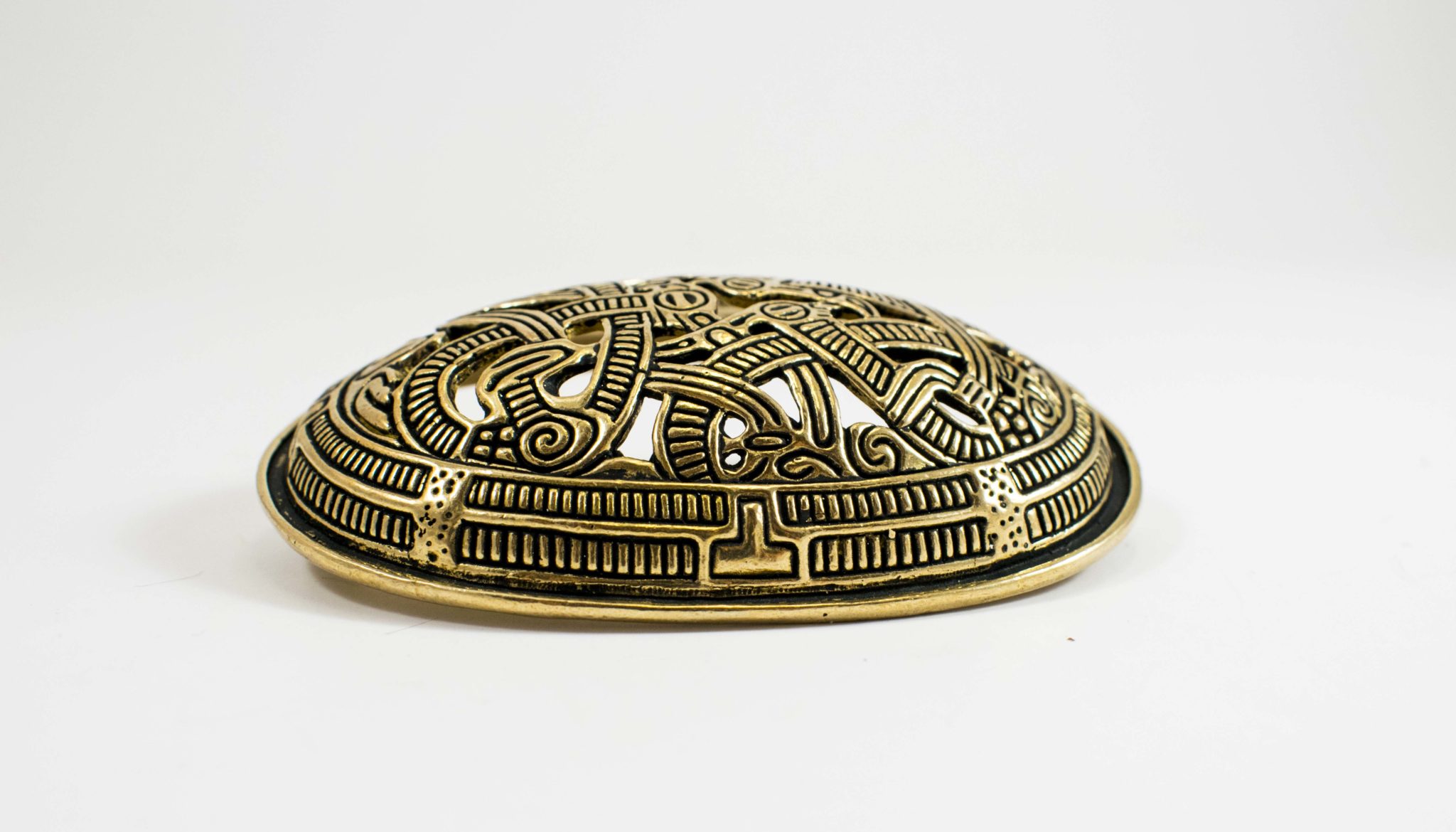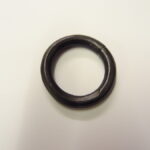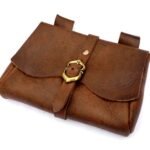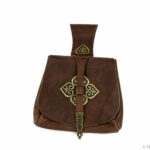Beskrivning
Vikingatida sköldbroscher i brons eller försilvrade.
Mått: 8,4 x 5,3 x 1,9 cm.
Replika av vikingatida sköld brosch som hittatdes i Buskerud i Norge.
Pris per par
The oval brooch from Morberg was found in the Norwegian province of Buskerud and is now exhibited in the Historical Museum in Oslo. The design of that oval brooch is typical of the so-called Jelling style, which dominated Viking art in the 10th century.
The Viking oval brooch is also known as tortoise brooch or oval brooch. Our reproduction is made of high-quality bronze and carefully polished.
You can buy that oval brooch replica also in genuine silver-plated.
Dimensions of the Viking oval brooch: 8.4 x 5.3 x 1.9 cm.
On the back of the oval brooch is a stable needle, so that Viking brooch is also suitable for garments made of heavy wool fabric.
In addition, the oval brooch is provided with an eyelet, in which the Viking lady can hang up her chains.
Oval brooches were an integral part of the Viking women’s garb. That particular brooch served to be worn below the right and left shoulder in pairs, to fasten the apron to the dress. The Viking oval brooch was always worn in pairs, therefore, it is advisable to order two pieces.
From 800 to 1000 A.D. the oval brooch was used as jewellery for Viking women’s clothing and is often found in Viking era women’s graves. The respective design and execution provided information about the social status of the wearer.
The oval brooch is the most common type of brooch in the Viking Age and can be found in finds from Ireland to the Volga. Apart from inexpensive mass-produced goods and simple copies, there were also extremely filigree, gold-plated silver bowl brooches of the highest quality.
But whether inexpensive or precious: In addition, one or more chains were often hung one above the other between the oval brooches and sometimes additionally attached to a round disc brooch or trefoil brooch in the middle of the chest.
A detailed treatise on the oval brooch can be found by Jan Petersen in the publication ”Vikingetide smykker” from 1928.

